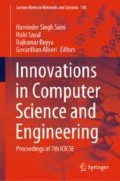Abstract
Technologies have been vastly developed in all sectors of the society. Especially in medical field, its growth has been at rapid phase. The newly invented medical equipment has currently been playing massive role in saving the lives of many patients if given the proper and timely treatment to them. Among many modern medical equipment, MRI scanning deserves special mention. Using this technology, we can have the detailed images of organs inside the body as well as categorize and identify the stage of disease. Moreover, with the help of MRI, myocardial disease can be categorized and assessed with several conditions. In particular, we can save patient from a critical situation. However, it is difficult to have an accurate prediction of the cardiac disease. Furthermore, the current medical procedures require more time and medical care to accurately diagnose cardiovascular diseases. Under these circumstances, deep learning method can be useful to have a segment clear and accurate cine image in very less time. A deep learning (DL) technique has been proposed to assist the atomization of the cardiac segmentation in cardiac MRI. We have adopted three types of strategies, according to which we firstly optimize the Jaccard distance to accept the adjective function and then implement the residual learning techniques to integrate it into the code. Finally, a fully convolutional neural network (FCNN) was trained to introduce a batch normalization (BN) layer. However, our standard results show for myocardial segmentation that time taken for volume of 128 × 128 × 13 pixels is less than 23 s which is found when the process is done by using 3.1 GHz Intel Core i9 to be volume.
Access this chapter
Tax calculation will be finalised at checkout
Purchases are for personal use only
References
Li X, Chen H, Qi X, Dou Q, Fu C, Heng P (2018) H-Dense UNET: hybrid densely connected UNET for liver and tumor segmentation from CT volumes. IEEE Trans Med Imaging 37(12):2663–2674
Voulodimos A, Doulamis N, Doulamis A, Protopapadakis E (2017) Deep learning for computer vision: a brief review. Comput Intell Neurosci 2018(13):1687–5265
Nasr-Esfahani M, Mohrekesh M, Akbari M, Soroushmehr S.R, Karimi N, Samavi S, Najarian K (2018) Left ventricle segmentation in cardiac mr images using fully convolutional network. In: Computer vision and pattern recognition, pp 1802–07778
Payer C, Štern D, Urschler M (2017) Multi-label whole heart segmentation using CNNs and anatomical label configurations. STACOM@MICCAI
Yuheng S, Hao Y (2017) Image segmentation algorithms overview. In; Computer vision and pattern recognition, pp 1707–02051
Wang C, Smedby Ö (2018) Automatic whole heart segmentation using deep learning and shape context. In: Statistical atlases and computational models of the heart, STACOM@MICCAI, vol 10663, pp 242–249
Papandreou G, Chen LC, Murphy K, Alan L (2015) Weakly- and semi-supervised learning of a DCNN for semantic image segmentation. In: IEEE international conference on computer vision, pp 1742–1750
Chen LC, Papandreou G, Kokkinos I, Murphy K (2018) Deep lab: semantic image segmentation with deep convolutional nets, atrous convolution, and fully connected CRFs. IEEE Trans Pattern Anal Mach Intell 40:834–848
Boopathi Kumar E, Thiagarasu V (2016) Color image segmentation techniques: a survey. Glob J Eng Sci Res 2348–8034
Mohamed RG, Seada NA, Hamdy S, Mostafa MGM (2017) Automatic liver segmentation from abdominal MRI images using active contours 176(1):0975–8887
Author information
Authors and Affiliations
Editor information
Editors and Affiliations
Rights and permissions
Copyright information
© 2020 Springer Nature Singapore Pte Ltd.
About this chapter
Cite this chapter
Kannan, R., Vasanthi, V. (2020). Deep Learning Framework to Predict and Diagnose the Cardiac Diseases by Image Segmentation. In: Saini, H., Sayal, R., Buyya, R., Aliseri, G. (eds) Innovations in Computer Science and Engineering. Lecture Notes in Networks and Systems, vol 103. Springer, Singapore. https://doi.org/10.1007/978-981-15-2043-3_26
Download citation
DOI: https://doi.org/10.1007/978-981-15-2043-3_26
Published:
Publisher Name: Springer, Singapore
Print ISBN: 978-981-15-2042-6
Online ISBN: 978-981-15-2043-3
eBook Packages: EngineeringEngineering (R0)

